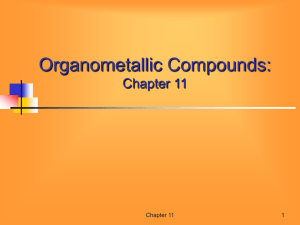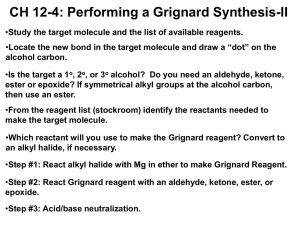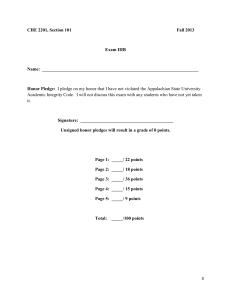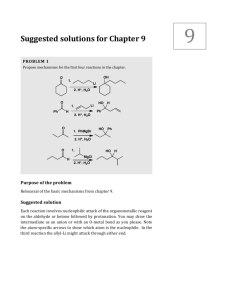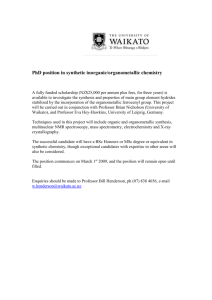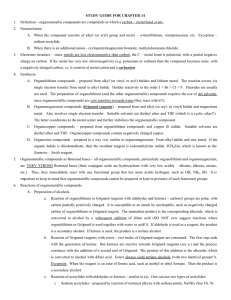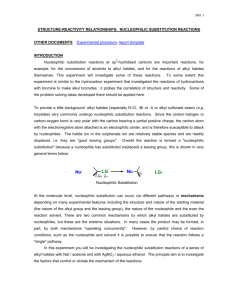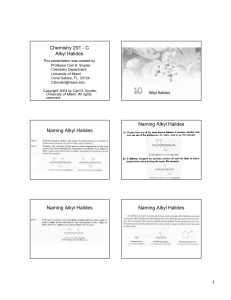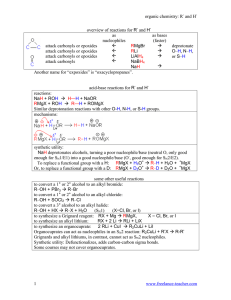tloc# i-5: reactions of alkyl halides
advertisement
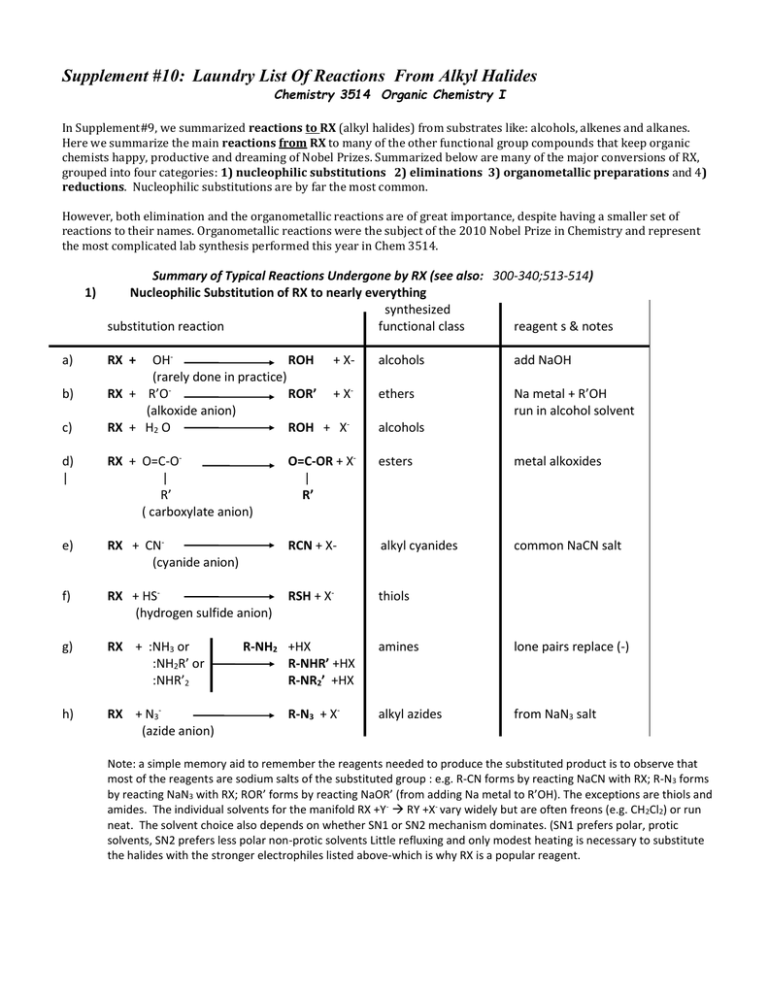
Supplement #10: Laundry List Of Reactions From Alkyl Halides Chemistry 3514 Organic Chemistry I In Supplement#9, we summarized reactions to RX (alkyl halides) from substrates like: alcohols, alkenes and alkanes. Here we summarize the main reactions from RX to many of the other functional group compounds that keep organic chemists happy, productive and dreaming of Nobel Prizes. Summarized below are many of the major conversions of RX, grouped into four categories: 1) nucleophilic substitutions 2) eliminations 3) organometallic preparations and 4) reductions. Nucleophilic substitutions are by far the most common. However, both elimination and the organometallic reactions are of great importance, despite having a smaller set of reactions to their names. Organometallic reactions were the subject of the 2010 Nobel Prize in Chemistry and represent the most complicated lab synthesis performed this year in Chem 3514. Summary of Typical Reactions Undergone by RX (see also: 300-340;513-514) 1) Nucleophilic Substitution of RX to nearly everything synthesized substitution reaction functional class reagent s & notes OHROH + X(rarely done in practice) RX + R’OROR’ + X(alkoxide anion) RX + H2 O ROH + X- alcohols add NaOH ethers Na metal + R’OH run in alcohol solvent d) | RX + O=C-O| R’ ( carboxylate anion) O=C-OR + X| R’ esters metal alkoxides e) RX + CN(cyanide anion) RCN + X- alkyl cyanides common NaCN salt f) RX + HS(hydrogen sulfide anion) RSH + X- thiols g) RX + :NH3 or :NH2R’ or :NHR’2 h) RX + N3(azide anion) a) b) c) RX + R-NH2 +HX R-NHR’ +HX R-NR2’ +HX R-N3 + X- alcohols amines lone pairs replace (-) alkyl azides from NaN3 salt Note: a simple memory aid to remember the reagents needed to produce the substituted product is to observe that most of the reagents are sodium salts of the substituted group : e.g. R-CN forms by reacting NaCN with RX; R-N3 forms by reacting NaN3 with RX; ROR’ forms by reacting NaOR’ (from adding Na metal to R’OH). The exceptions are thiols and amides. The individual solvents for the manifold RX +Y- RY +X- vary widely but are often freons (e.g. CH 2Cl2) or run neat. The solvent choice also depends on whether SN1 or SN2 mechanism dominates. (SN1 prefers polar, protic solvents, SN2 prefers less polar non-protic solvents Little refluxing and only modest heating is necessary to substitute the halides with the stronger electrophiles listed above-which is why RX is a popular reagent. supplement #10 2) chemistry 3514 alfred state college Elimination (to form alkenes) Notes and reading OHC-C | X 3) C=C + H2O + Xalkene competes w/ substitution (if no base: can eliminate via E1 particularly for 2,3o See pp 391-4) Organometallic Reagent Preparations (to form bigger molecules) RX + Mg neat RX + Li Note: see text pp. 383-91 ether/DRY RMgX Grignard reagent See text pp 345-46 CuI (R-Li ) R2 CuLi see text pp 346-8 Corey-House or Gilman reagent R’ | RMgX + R’R” C=O---> R-C-OH carbonyl cmpd | routes to bigger molecules R” bigger alcohol R2CuLi + R’X-------> R-R’ bigger alkane 4) Reduction (back to alkanes)… a) RMgX + H2O RH + Mg(OH)X unwanted event in Grignard alkane via hydrolyis of Grignard
